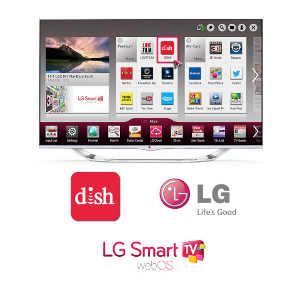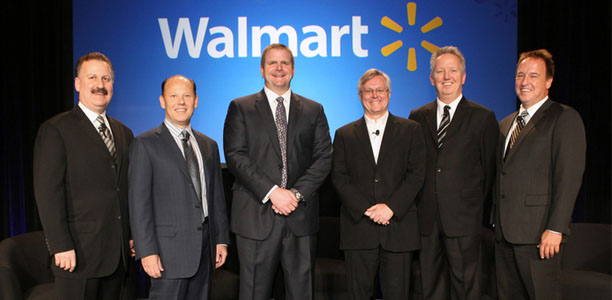“Traditional World of Print Magazines is in Decline”
Digital technologies are changing the way consumers receive and read magazines. In this evolving media market, the rosy years of traditional content companies have been receding in the rearview mirror.
The next step in market evolution will certainly shuffle the deck for most media players as digital is poised to dominate.
While this change is happening, Next Issue Media, a joint venture formed by five leading U.S.-based publishers – Conde Nast, Hearst, Meredith, News Corp. and Time Inc., – offers help to publishers who are looking for new business models in the digital world.
Morgan Guenther, president and CEO of Next Issue Media, sheds light on a number of emerging trends in the new media ecosystem in an exclusive interview with RMN Digital managing editor, Rakesh Raman.
Qs & As
1. Do you think digital media adoption is inevitable for publishers? If yes, why?
Not only is digital media adoption inevitable, it is happening now at an ever accelerating pace. Almost every major publisher in the industry has recognized the need to adapt its print offerings for the digital market.
Whether developing dedicated reader apps for single titles, providing a certain percentage of content to aggregator apps, opting for mobile Web versions of print assets or participating in new business models like unlimited access subscription plans, publishers realize that the traditional world of print magazines is in decline under almost any measure of long term value: paid subscriptions, newsstand sales and year-over-year ad revenue.
The way to grow the business again is to make high value brands and magazine content available across channels , wherever readers want to consume it: in print, and on their tablets, mobile devices or desktops. And in the process, right size the mix between paid content and rate base revenues which has become skewed in the print world.
2. Do consumers really want to be deluged with this surfeit of information supplied through an array of new media channels?
The issue is really management of information, not overload. The most recent data shows that consumers engage with digital media by day part – headlines and news flashes in the morning; a slideshow, news update or video at the desktop in the afternoon; and deeper engagement with longer articles and rich media at night.
Couple that with more sophisticated search and personalization capabilities across hundreds of millions of high-resolution mobile devices, and you can see that this is not a case of less being more. For magazines in particular, the upside for massively increased user engagement across curated digital content categories is staggering.
3. Do you share this view that most media companies are increasingly becoming part of a herd phenomenon driven by digital technologies – and hurriedly offering what they have rather than what consumers want? As a result, there may be an information explosion, but there’s still a dearth of useful content.
On the contrary, at least in our industry, we have seen publishers take a consumer centric approach to their digital content offerings. Layout, interactivity, design, video, features incremental to print – what is the right consumer experience for a particular brand across platforms? And what are the tradeoffs needed to be made around such things as file size, download times and uniform navigation?
We’re still in learning stage, but we’re talking about optimizing and enhancing a core proposition of branded high value content as opposed to scraping the web to try to find something useful. And that is a great place to be.
4. In a multiscreen content delivery environment, shouldn’t content companies customize content for each screen instead of reproducing the same content on multiple frontend consumer gadgets?
It depends on the type of content being delivered. The same video stream may work across 10”, 8.5” and 7” tablets and 4” smartphones without much customization. A news aggregator may deliver the very same news bytes with only minor changes in the UI (user interface).
Some games work across multiple screens and others need to be completely reworked. But for high design, high engagement categories like magazines, how your brand is represented on a smartphone versus a tablet may be very different.
And the question to ask isn’t whether you can make it work – you can squeeze a highly interactive, full color magazine on a 4” screen if you want to – but rather what is the experience across devices that will be complementary, intuitive and delight the consumer? And then address the challenge of delivering that differentiated experience in a cost-effective manner without introducing entirely new SKUs and workflows in the process.
5. Are you signaling an imminent death of traditional paper magazines by launching an initiative such as Next Issue Media?
At this stage of the game, digital magazine readership is very small when compared to print. But print is no longer a growth proposition and digital uptake – while still in its formative stages – is rapidly accelerating.
At some point in the near future the lines will cross; when that happens, the overall size of the magazine industry – print plus digital – is potentially much larger than today and the industry as a whole benefits.
By driving deeper levels of reader discovery and engagement across more titles via our flat rate offering, Next Issue increases the overall slice of leisure time people spend with magazines, which is a “win win” proposition for all involved.
6. How will participating publishers benefit from Next Issue Media venture?
Experience with other forms of digital media – music and film in particular – shows that consumer adoption and engagement grows with “all you can eat” content offerings. So there is no reason to believe that won’t be the case with magazines as well.
Early results suggest that most users of our service are new to the brands, spend appreciably more time and money reading magazines than average, and discover new brands and new content every day via the flat rate offering. So if a publisher can grow its audience, increase brand exposure and drive incremental revenues via Next Issue, what’s not to like?
7. What is your message to traditional media companies that have not yet accepted the importance of digital media?
I’d like to think we’re beyond the acceptance stage in most media companies; if I’m right, the challenge then becomes managing the transition to digital effectively. In some cases, like television and magazines, you have a healthy traditional business that can support a more deliberate and staged transition strategy.
In others, like newspapers, the forces at work require a more rapid response without much of a safety net. The key for high value media players is to recognize the value of their content in the digital realm and to look toward multiple revenue streams – paid content, advertising and commerce – as opposed to betting that lots of eyeballs will translate into lots of ad dollars.
* * *
Morgan Guenther (pictured above) is the president and CEO of Next Issue Media. Prior to Next Issue, he was president of TiVo, another Silicon Valley company which helped usher in the digital era for traditional media.
Photo courtesy: Next Issue Media
This interview is published under the RMN Digital’s “Thought Leaders” series in which top tech market leaders of the world express their views on different burning issues and market trends.
Related Posts
-
 DISH Delivers Virtual Joey on LG Smart TVs
No Comments | Jan 6, 2014
DISH Delivers Virtual Joey on LG Smart TVs
No Comments | Jan 6, 2014 -
 Launch of UN Data Innovation Lab Workshop Series
No Comments | May 22, 2016
Launch of UN Data Innovation Lab Workshop Series
No Comments | May 22, 2016 -
 OMRON Introduces Hand Gesture Recognition Technology
No Comments | May 28, 2012
OMRON Introduces Hand Gesture Recognition Technology
No Comments | May 28, 2012 -
 Hot Offers Again in The 7-O-7 Tech Shop
No Comments | Mar 19, 2012
Hot Offers Again in The 7-O-7 Tech Shop
No Comments | Mar 19, 2012











